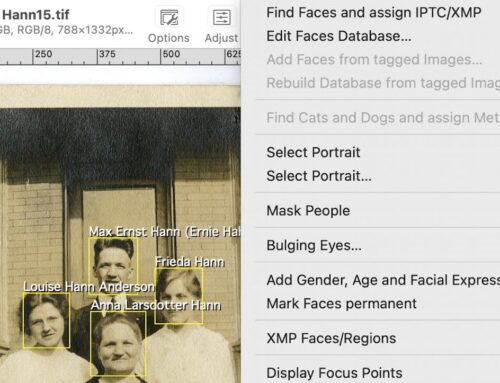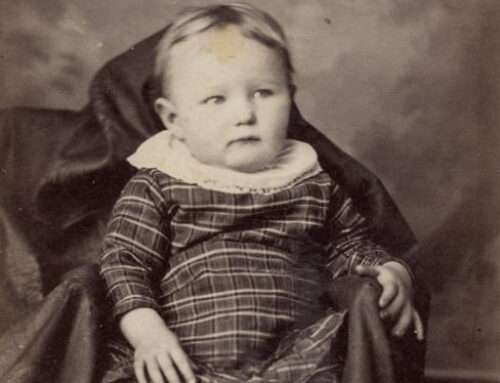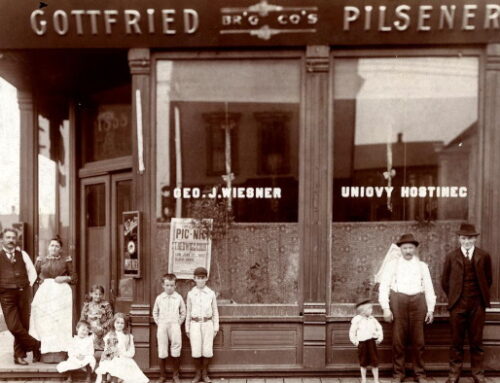My grandmother at work c. 1912 – Frieda Hann Loe (second from right) worked as a seamstress and tailor most of her life in various Chicago sweatshops. She was born in Chicago in 1896 as a posthumous child, two months after her father died, and left school after the 8th grade to help support her mother and siblings.
Because of the prominent exist sign, I think this was taken circa 1912, or right after the time of the Triangle Shirtwaist Factory Fire in 1911 in New York. I found this photograph (a mounted vintage print) and three other similar images, after her death in 1979. Oh, what I would give to talk to her about this photograph, even for just a few minutes!
Clothing and garment manufacturing in Chicago was big business from the time of the Fire in 1871 to the Great Depression. My Scandinavian and German immigrant family on both sides did piecework at home or worked in sweatshops.
The Encyclopedia of Chicago states:
Starting from the 1860s, the city’s men’s clothing merchants employed tailors and had ready-to-wear clothes made at their shop. The industry expanded in the next decade, as merchant-manufacturers like Harry Hart and Bernard Kuppenheimer produced suits as well as work clothes and marketed them in the Midwestern and Southern states. Those years also saw women’s clothing production added to the industry, when manufacturers like Joseph Beifeld began producing ready-made cloaks. Chicago was increasingly involved in nationwide competition, which led to the sweating system in the 1880s. Manufacturers sent out work to be done by contractors and subcontractors, who often opened tiny shops in poor districts, theNear West Side in particular, and hired immigrants for long hours at low wages. In the early 1890s, urban reformers engaged in an anti-sweatshop campaign in Chicago and across the country.
Although the factory system never entirely replaced sweating, it led to modern labor relations. Ethnic diversity particularly characterized Chicago’s workforce, which included a significant number of Swedes, Czechs, Poles, and Lithuanians, in addition to Jews and Italians. The workforce remained further fragmented by gender and skill. Women constituted the majority on the shop floor but had little access to high-paying jobs. Cutters, mostly of German or Irish descent, despised tailors. Yet factories, mainly located close to immigrant settlements in the Northwest, Near West, or Southwest districts in addition to the Loop, helped workers cultivate close social networks and resort to collective action.





Thank you! Doesn’t exactly look like a day at the beach, does it?
What a great historical photo!
Wow great photo! Thanks for sharing!